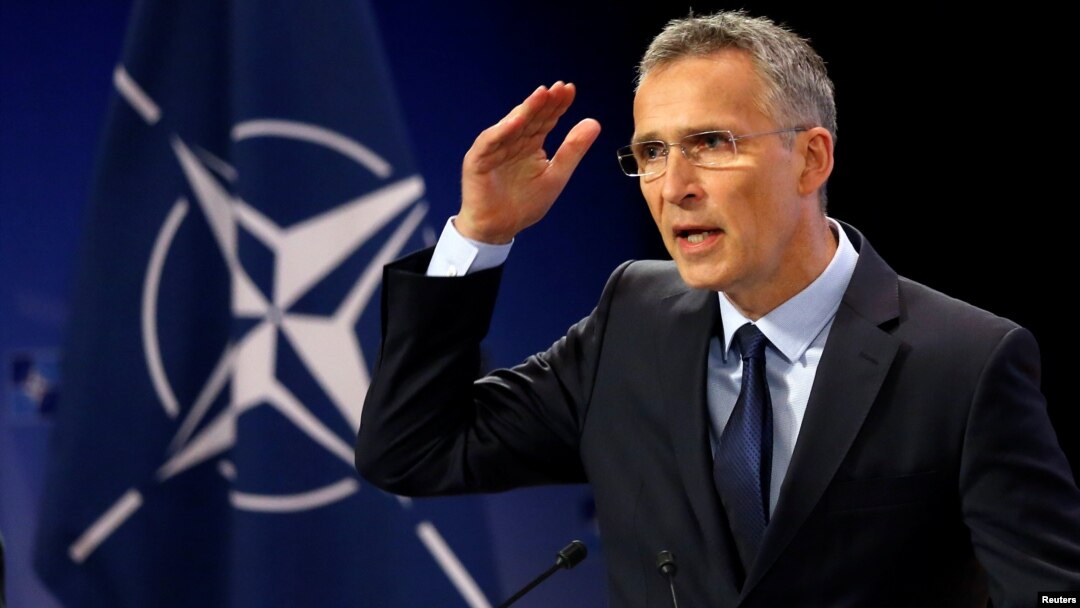NATO allies -- with the exception of the United States -- will increase defense spending by 4.3 percent this year, marking a cumulative $46 billion increase since 2014, the alliance's chief says.
"After years of decline, in 2015 we saw a real increase in defense spending across European allies and Canada," NATO Secretary-General Jens Stoltenberg said in Brussels on June 28.
"In 2016, this continued, and this year, in 2017, we foresee an even greater annual real increase of 4.3 percent. That is three consecutive years of accelerating defense spending," Stoltenberg told a news conference, one day before NATO defense ministers meet to discuss greater military expenditures.
"This means, over the last three years, European allies and Canada spent almost $46 billion more on defense," he said.
NATO sets a goal of spending 2 percent of GDP on defense for each member, but only the United States, Britain, Estonia, Greece, and Poland now meet that guideline, leaving the United States shouldering about 70 percent of the alliance's expenditures.
During a meeting with EU leaders in Brussels on May 26, U.S. President Donald Trump sharply criticized many NATO members for failing to meet military spending targets.
Stoltenberg said that the alliance expects three other member states to reach the 2 percent threshold this year and in 2018.
"Last year, five allies met NATO's benchmark of spending 2 percent of GDP on defense. This year, we expect Romania to join them and in 2018, Latvia and Lithuania will spend 2 percent of GDP on defense as well," he said.
Twenty-five of NATO's 29 allies plan to lift spending this year, Stoltenberg said, ahead of a June 29 meeting of NATO defense ministers in Brussels.
NATO officials have said that while Trump's tough stance had put pressure on member states to spend more on defense, Russia's illegal annexation of Ukraine's Crimea region in March 2014 had a bigger impact, with allies agreeing to end years of defense cuts.
Stoltenberg also said that several days ago, four multinational NATO battle groups in the three Baltic countries and Poland became fully operational, which he called a "historic achievement."
NATO defense ministers will also discuss the future of the alliance's mission to Afghanistan during their meeting in Brussels, Stoltenberg said.
NATO ended its combat mission in Afghanistan in December 2014, and the withdrawal of foreign troops led to a deteriorating security situation in the country.
NATO countries currently have some 13,450 troops in Afghanistan, including 8,400 U.S. military personnel, who are mainly training the Afghan armed forces.
"We are not planning to go back to combat operations but we are looking into the exact troop level in our train, assist, and advice mission," Stoltenberg said, adding that NATO allies were “particularly looking into how we can train more special operation forces in Afghanistan."
U.S. media report that the Trump's administration is weighing sending another 3,000 to 5,000 troops to Afghanistan in order to break what Defense Secretary Jim Mattis has called a "stalemate" between government forces and the Taliban.


